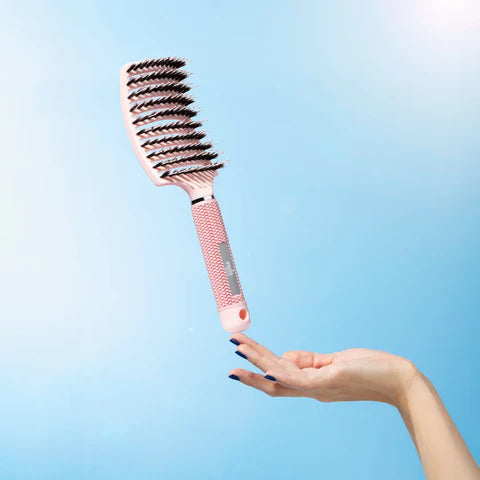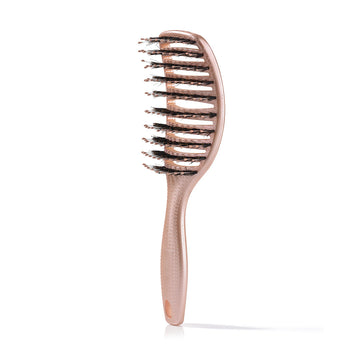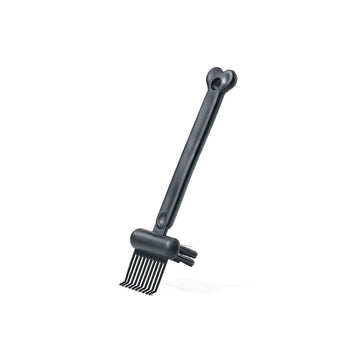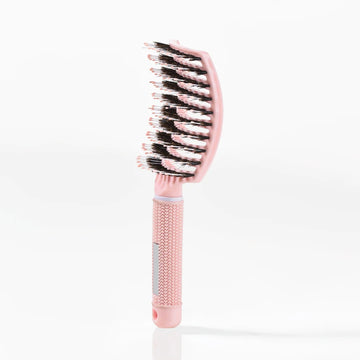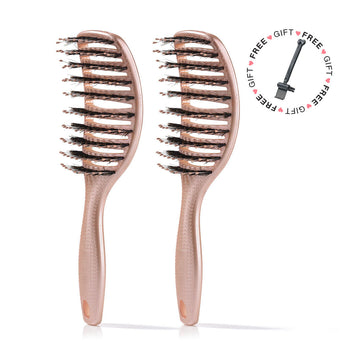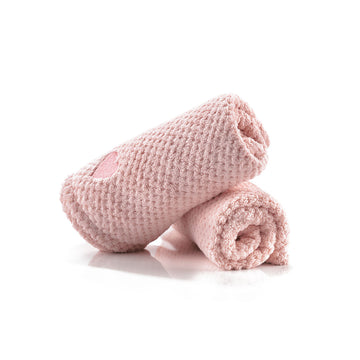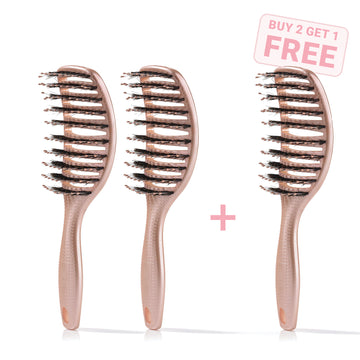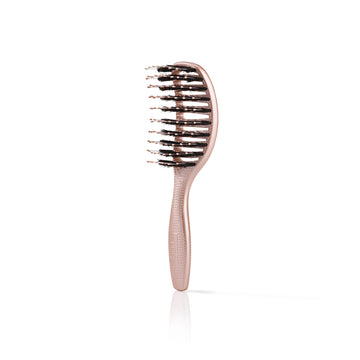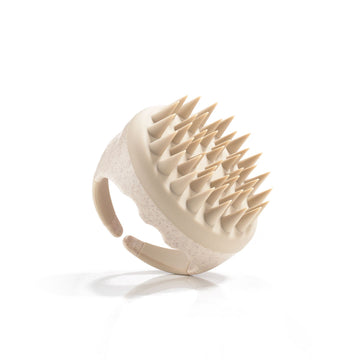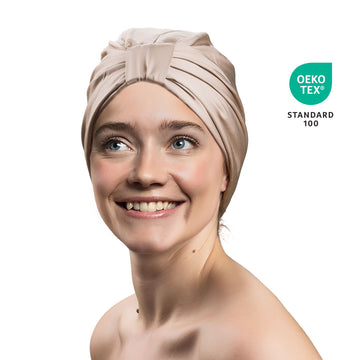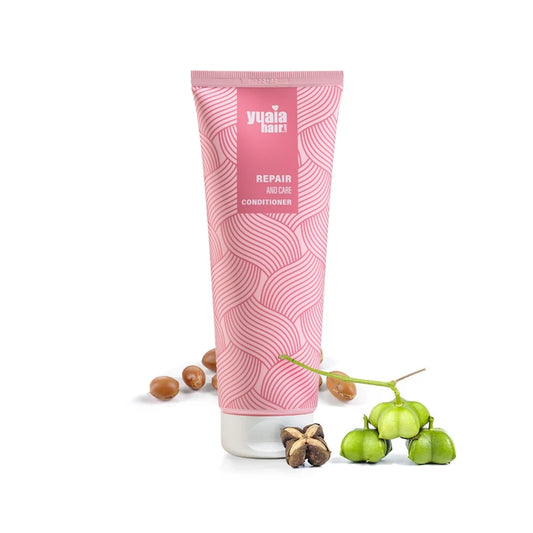
Can you cut face framing layers yourself or should you go to a professional?
It’s definitely possible to cut face framing layers yourself if you approach it slowly and carefully. A professional can help shape them to suit your face and hair texture more precisely, but DIY is an option too. If you visit a stylist, bring photos and clearly explain the length and softness you want.
How to cut face framing layers
Step 1: Prepare
Start with clean, dry, or slightly damp hair to get a true sense of length and movement. Gather sharp hair-cutting scissors, a fine-tooth comb, sectioning clips, and a mirror to ensure accuracy and control while cutting.
Step 2: Plan
Decide where the shortest layer should begin, usually between the cheekbones and chin. Consider your face shape—round faces work best with longer layers, while oval and heart-shaped faces can suit slightly shorter pieces.
Step 3: Cut
Part the hair in the middle or where it’s normally worn. Section off the front pieces from the crown to just behind the ears. Comb them forward, hold them taut between your fingers, and cut at a slight angle, tapering toward the face. Use point-cutting (snipping into the ends vertically) for a softer finish.
Step 4: Blend and refine
Carefully blend the new layers into the surrounding hair for a seamless look. Use slow, controlled trimming and remove only small amounts at a time. Continuously step back to check the shape from different angles. This gradual approach ensures balance, allowing for further adjustments without overcutting.
Techniques for styling face framing layers
For volume: Blow dry the front sections with a round brush, rolling the hair away from your face to create lift and movement.
For sleekness: Use a flat brush while drying, then glide a flat iron gently through the layers for a smooth, polished finish.
For waves or curls: Wrap just the face-framing pieces around a curling iron away from your face to create soft, airy definition.
For curly hair: Use a diffuser to lift and define the face-framing curls, enhancing shape while minimizing frizz.
Tips for face framing layers
Face framing layers can beautifully highlight your features when placed and styled with care:
- Always direct the layers away from the face to create an open, lifted look that draws attention to your eyes and cheekbones
- When styling, use a round brush or curling tool to softly curve the ends outward for a natural flow
- After shaping, finish with a light-hold hairspray to keep the layers in place without weighing them down or making them stiff
This allows the hair to maintain movement and bounce, giving the style a polished yet effortless appearance throughout the day.
Face shape and hair type considerations
When planning face-framing layers, it’s important to consider both face shape and hair type, as these factors affect how the haircut will look and behave.
Face shape:
- Round face: Start the shortest pieces just below the chin to elongate the face.
- Square face: Fine, feathered layers soften and balance a strong jawline.
- Heart-shaped face: Layers around the chin can balance a wider forehead.
- Long face: Begin layers around the cheekbones to create more width and visual balance.
Hair type:
- Fine hair: Works best with subtle, delicate layers that add volume without weighing it down.
- Thick or curly hair: Needs well-blended, smooth transitions to avoid making the hairstyle feel heavy or bulky.
Trends and inspiration for face framing layers
Face-framing layers are trending in 2025 with popular variations like the "curve cut" or pairing them with curtain bangs. Celebrities often wear them with loose waves for a relaxed yet polished look. They work beautifully on short bobs, lobs, or long flowing styles, making them a versatile choice for any length. This trend is also evolving with more layered looks that incorporate subtle highlights or balayage to emphasize the framing effect, adding depth and dimension around the face.
Many stylists are experimenting with combining face-framing layers with shag cuts or wolf cuts for an edgier style, while others keep them ultra-soft and blended for a more classic finish.
How to maintain face framing layers
To keep face framing layers looking their best, regular trims are important to maintain their shape and prevent split ends from disrupting the flow of the cut. Hydration also plays a big role - using a nourishing conditioner or leave-in treatment helps keep the strands smooth and manageable, especially around the face where they’re more exposed. Consistently using heat protectant products before styling can further preserve the health and softness of the layered ends.
Common pitfalls of face framing layers
When cutting face-framing pieces, several common mistakes can make the result less flattering. One of the most frequent is cutting them too short, which can make styling difficult and lead to awkward growing-out stages. Another mistake is adding too many sections around the face, which can create a choppy or uneven look.
To avoid these issues, aim for soft, well-blended transitions that suit both your hair type and face shape, allowing the pieces to frame your features naturally without adding unnecessary bulk or heaviness.
Why face-framing layers are worth it
Face framing layers are a simple yet powerful way to enhance your hairstyle. Knowing what they are, how to cut them, and how to style them ensures they flatter your face and hair type while staying low-maintenance. Whether you try them at home or with a stylist, this timeless technique can refresh your look instantly.
Frequently asked questions
Will face framing layers suit my face shape?
Yes - they can be customized to suit any face shape. The key is adjusting where the shortest pieces start.
Can I cut face framing layers at home?
Yes, but cut very gradually and always use hair-cutting scissors for a clean result.
What products help keep layers styled?
Light styling creams, texturizing sprays, and heat protectants are all useful for keeping the shape polished.
 2-4 day UK delivery
2-4 day UK delivery
 25.000+ satisfied customers
25.000+ satisfied customers
 Satisfaction Guarantee
Satisfaction Guarantee





